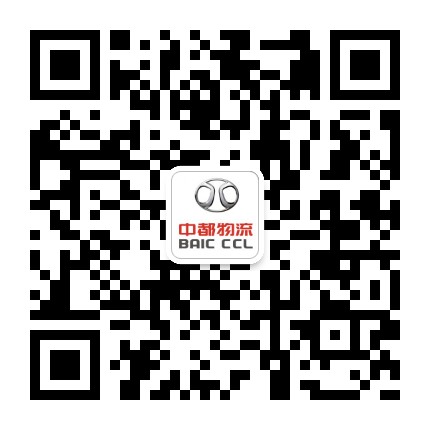Logistics Times Weekly: Supply Chain Management Services and Smart Logistics are Included in the Statistical Classification of Digital Economy and Its Core Industries (2021)
Recently, the National Bureau of Statistics issued for the first time the Statistical Classification of Digital Economy and Its Core Industries(2021) (hereinafter referred to as the Digital Economy Classification), which determines the basic scope of the digital economy from the two aspects: "digital industrialization" and "industrial digitalization", providing a unified and comparable statistical standard for the digital economic accounting in China.
The "supply chain management service" and “smart logistics”are included in the Digital Economy Classification as a sub-category under the medium category “other digital factor-driven industry” of the main category "digital factor-driven industry" and a medium category under the main category "digital efficiency improvement industry" respectively, which means that the "supply chain management service" as a new industry format and "logistics" as an industry in the digital economy has been further clarified, and also shows that the importance of "supply chain management service" and the digital transformation of "logistics" digitalization to the development of the national economy.
The following is the original text of Statistical Classification of Digital Economy and Its Core Industries(2021) issued by the National Bureau of Statistics:
Statistical Classification of Digital Economy and Its Core Industries(2021)
Source: National Bureau of Statistics
I.Classification Purpose
In order to implement the major decisions and deployments of the Party Central Committee and the State Council on the digital economy and informatization development strategy, scientifically define the scope of the digital economy and its core industry statistics, comprehensively count the scale, speed, and structure of the digital economy to meet the needs of party committees, governments at all levels and all social sectors, this classification is hereby established.
II.Compilation Principles
(I) Based on relevant documents of the Party Central Committee and the State Council. In this classification, the basic scope of digital economy is determined in compliance with major decisions and deployments of the Party Central Committee and the State Council on the digital economy development strategy, "G20 Digital Economy Development and Cooperation Initiative" proposed at the G20 Hangzhou Summit, and the policy documents such as the 14th Five-Year Plan and Long-Range Objective 2035 for the National Economic and Social Development of the People's Republic of China, Digital Economy Development Strategy Outline, National Informatization Development Strategy Outline and Guidance on Promoting the Sound Development of Internet Finance.
(II) Reference to relevant domestic and foreign statistical classification standards. This classification is fully with reference to the methods of relevant domestic and foreign institutions on the classification of the digital economy as well as relevant statistical classification standards such as Statistical Classification of New Industries, New Formats and New Business Models (2018),Classification of Strategic Emerging Industries (2018) and Interim Provisions on the Statistical Classification of Information Related Industries, and reflects various basic activities closely related to the digital technology.
(III) Based on the Classification of National Economic Industries. Based on the principle of homogeneity in the National Economical Industry Classification (GB/T 4754-2017), this classification subdivides the categories of related industries and activities that meet the characteristics of the digital economy and have the purpose of providing digital products (goods or services).
(IV) For the purpose of satisfying the statistical monitoring of the digital economy. Based on the actual situation of current statistical work, this classification focuses on the needs of digital economy statistics and accounting, fully takes into account the operability of the classification and the availability of data, and strives to comprehensively and accurately reflect the development of the digital economy and its core industries.
III. Concept Definition and Classification Scope
Digital economy refers to a series of economic activities that use data resources as key production factors, modern information networks as important carriers, and effective use of information and communication technologies as an important driving force for efficiency improvement and economic structure optimization. This classification determines the scope of the digital economy industry as 5 categories: 01 digital product manufacturing, 02 digital product service industry, 03 digital technology application industry, 04 digital element driving industry and 05 digital efficiency improvement industry.
The core industry of the digital economy refers to the provision of digital technology, products, services, infrastructure and solutions for the digital development of the industry, as well as various economic activities that rely entirely on digital technology and data elements. The categories 01-04 in this classification are the core industries of the digital economy.
IV. Structure and Coding
This classification divides digital economic activities into three layer, which are represented by Arabic numerals, with the line classification and hierarchical coding methods. The first level is main category, which is represented by 2 digits, and there are 5 main categories; the second level is medium category, which is represented by 4 digits, and there are a total of 32 medium categories; the third level is sub-category, which is represented by 6 digits, and there are a total of 156 sub-categories.
V. Related Description
(I) The main categories 01-04 corresponding to the core industries of the digital economy, i.e., the digital industrialization part, mainly includes computer communications and other electronic equipment manufacturing, telecommunications, broadcasting, television and satellite transmission service, Internet and related services, software and information technology service, etc. and also are the foundation of the digital economy development; the main category 05, i.e., the part of industrial digitalization, refers to the output increase and efficiency improvement brought by the application of digital technology and data resources to traditional industries, and is the integration of digital technology and the real economy.
(II) The specific scope and description on the classification of national economic industries involved in this classification are consistent with National Economic Industry Classification Notes in2017.
(Source: China Logistics Times Weekly)




